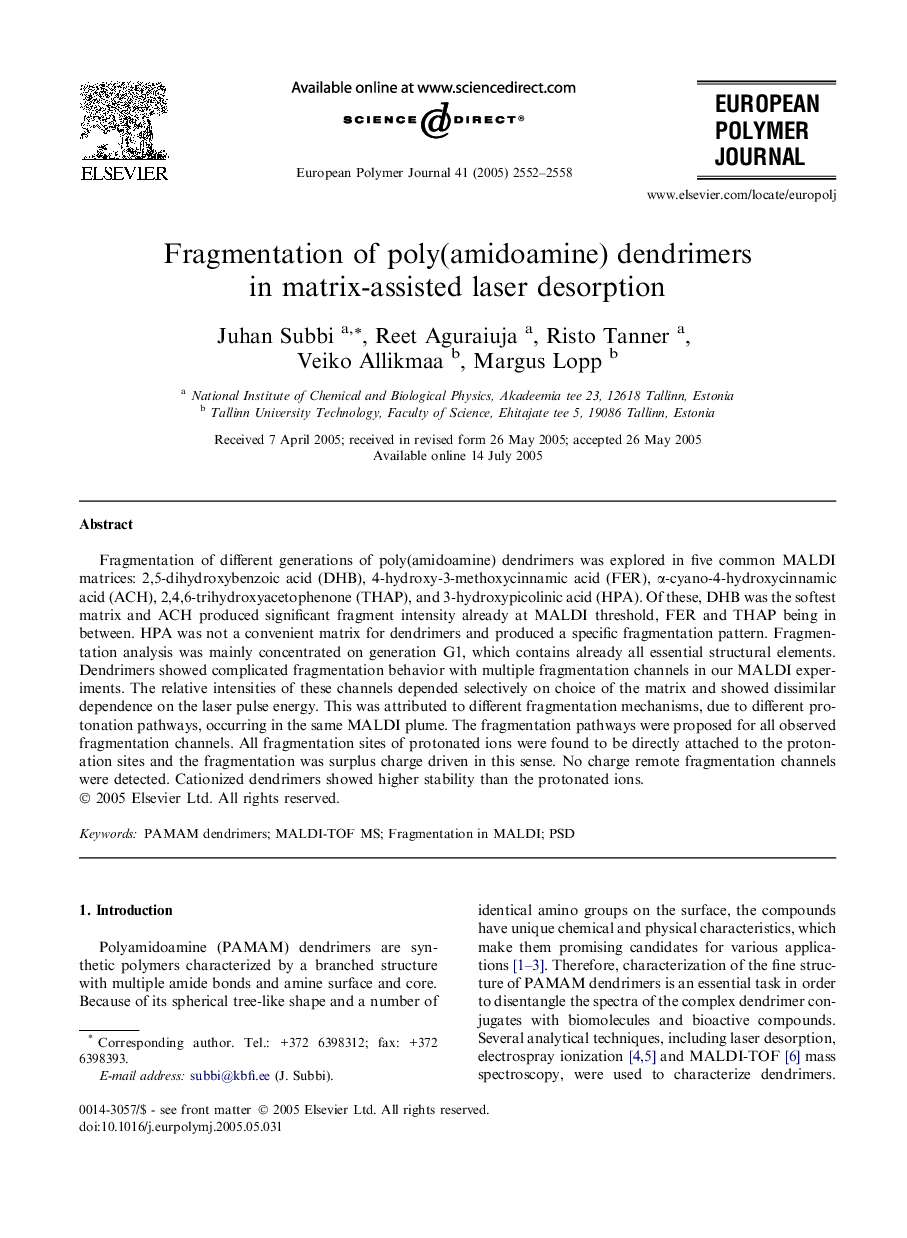| Article ID | Journal | Published Year | Pages | File Type |
|---|---|---|---|---|
| 1397098 | European Polymer Journal | 2005 | 7 Pages |
Fragmentation of different generations of poly(amidoamine) dendrimers was explored in five common MALDI matrices: 2,5-dihydroxybenzoic acid (DHB), 4-hydroxy-3-methoxycinnamic acid (FER), α-cyano-4-hydroxycinnamic acid (ACH), 2,4,6-trihydroxyacetophenone (THAP), and 3-hydroxypicolinic acid (HPA). Of these, DHB was the softest matrix and ACH produced significant fragment intensity already at MALDI threshold, FER and THAP being in between. HPA was not a convenient matrix for dendrimers and produced a specific fragmentation pattern. Fragmentation analysis was mainly concentrated on generation G1, which contains already all essential structural elements. Dendrimers showed complicated fragmentation behavior with multiple fragmentation channels in our MALDI experiments. The relative intensities of these channels depended selectively on choice of the matrix and showed dissimilar dependence on the laser pulse energy. This was attributed to different fragmentation mechanisms, due to different protonation pathways, occurring in the same MALDI plume. The fragmentation pathways were proposed for all observed fragmentation channels. All fragmentation sites of protonated ions were found to be directly attached to the protonation sites and the fragmentation was surplus charge driven in this sense. No charge remote fragmentation channels were detected. Cationized dendrimers showed higher stability than the protonated ions.
